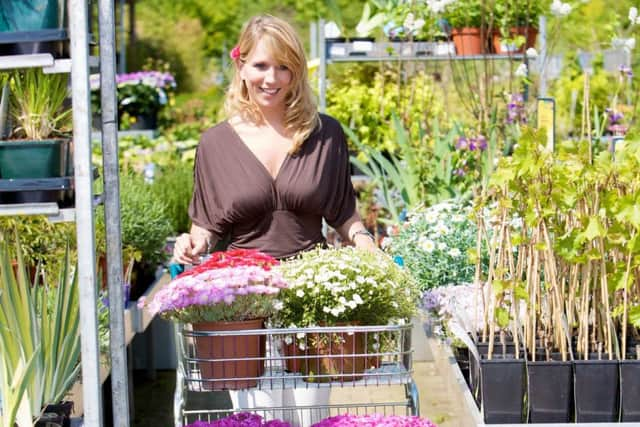New Year’s resolutions - How to go green in the garden to help the environment
And today, as people up and down the country set resolutions as the new year begins, many will be looking at how they can make 2020 more green - We explore a few green-fingered ideas.
1. Embrace Veganuary
There are all sorts of health reasons for going vegan this month, but you can grow vegan too. So when you’re starting off those vegetables, if you resolve to be a true vegan, you will avoid animal manures and blood, fish and bone products.
Advertisement
Hide AdAdvertisement
Hide Ad

Start your own compost bin using green and brown organic material including grass and plant clippings, leaves and vegetable food waste. To make sure you’ve plenty of iron and protein in your new vegan diet, grow artichokes and broccoli.
2. Only grow what you eat
So many gardeners with a new vegetable patch go mad with seeds at the beginning of the year, only to realise that they have grown far too much of a vegetable that they don’t actually like.
If you don’t love radishes in every salad, just grow a row or two successionally during the summer, rather than waste them. Of course, some gardeners are happy to donate or swap crops with neighbours. Planning ahead is the key.
3. Ditch plastics
Advertisement
Hide AdAdvertisement
Hide AdIt’s a hot topic and you can do your bit by ditching plastics in favour of more biodegradable products. You can look towards bamboo gloves and seed trays, biodegradable mini plant pots, or even use tubes of empty toilet rolls to plant seedlings.
Re-use plastic pots which aren’t recyclable. If you have too many, some garden centres offer take-back schemes, encouraging customers to drop off unwanted plastic trays and pots, so they don’t end up in landfill.
4. Make a space for wildlife
Keeping corridors open for wildlife is relatively easy to do. Make a plan to add insect-friendly plants and flowers to your design this year. If you have a larger garden, leave an area wild, allowing nettles, brambles and other wild flowers to flourish, which will further attract insects and will make sheltering spots for hedgehogs and other mammals.
Advertisement
Hide AdAdvertisement
Hide AdBag a bird feeder or two, placing them in a sheltered spot near trees or shrubs, keep them topped up and soon enough the wildlife should start arriving. And leave out a shallow bowl of water with a few pebbles in it, making easy access for insects, frogs and birds.
5. Stop your impulse buys
So often we’re tempted to buy that glorious plant which looks beautiful in flower on display, only to find that there isn’t a natural place for it in our garden.
Resolve to make a list each time you visit the garden centre and stick to it. If you know the plant you want and the space that will accommodate it, then fine, but don’t go off the beaten track with spontaneous purchases which won’t fit into your scheme.
6. Adopt a houseplant
Advertisement
Hide AdAdvertisement
Hide AdHouseplants have become more fashionable and diverse in recent years, thanks to social media sharing, and with the wealth of research out there pointing to the fact that houseplants aid wellbeing and air quality, it’s surely time to embrace them.
Some, such as Dracaena marginata, rubber plants and Boston ferns, improve air quality, while peace lilies and ivy have higher transpiration rates which help moisturise the skin and alleviate dry eyes by increasing air humidity inside the home.
But they also look stylish, with trends still pointing towards easy-maintenance cacti and other succulents.